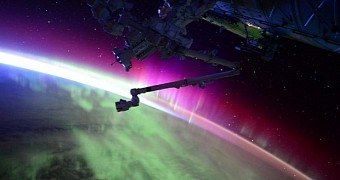One of the perks of living aboard the International Space Station in our planet's orbit is getting to observe phenomena and events like auroras and sunrises or sunsets from a whole other perspective than regular, Earth-bound folks.
For instance, it was just a few hours ago that astronaut Scot Kelly got to see the Aurora Borealis, a.k.a. the Northern Lights, dancing over our planet's Northern Hemisphere. Better yet, he witnessed the stunning display of bright colors just before sunrise.
Not one to keep us out of the loop, the astronaut shared photos and even a video of the mesmerizing show on Twitter. Scroll down to check them out, but first brace yourselves to suddenly grow terribly jealous of NASA's Scott Kelly.
As explained by scientists, auroras form when highly energetic electrons reach Earth's atmosphere and, while moving through it, collide with either oxygen or nitrogen atoms hovering at altitudes of 90 to 300 kilometers (56 to 186 miles).
When electrons collide with nitrogen atoms, the result is blue or purplish-red auroras, depending on the altitude at which these encounters happen. Interactions between electrons and oxygen atoms, on the hand, result in yellowish-green or intense red auroras.
Interestingly, there is also such a thing as black auroras, which researchers describe as the dark patches that crisscross the regular, colorful auroras. These black auroras indicate regions where electrons are being pushed out of Earth's atmosphere and into space.
“Whereas ordinary auroras are associated with downward-flowing electrons bombarding the atmosphere, the black ones are associated with electrons being sucked out from the atmospheres into space,” researcher Tomas Karlsson explained in a recent interview.
Another pass through #Aurora. The sun is very active today, apparently. #YearInSpace pic.twitter.com/1uDtRzrGuY
— Scott Kelly (@StationCDRKelly) August 15, 2015
Day 141. The chapter of a day ends as it began. #Aurora on a sunrise. Good night from @space_station! #YearInSpace https://t.co/hZBMs9q0CS
— Scott Kelly (@StationCDRKelly) August 15, 2015

 14 DAY TRIAL //
14 DAY TRIAL //